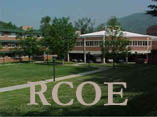Artifact # 10
Artifact # 11
Artifact # 12
Artifact # 13
Artifact # 14
Artifact # 15
ISTE National Educational Technology Standards
References
B. Context This project was created in my CI3750 class, Integrating Technology into Instruction. We worked in small groups to investigate the views of body image in Crossnore Elementary School. We constructed this project through a Powerpoint presentation which was presented to the class. In this presentation, we focused on the growing emphasis of media on younger children, specifically K-1. We took digital pictures and stills from video footage to import into our presentation through Adobe Photoshop and IMovie.
C. Impact This project could be used as a presentation to parents during Parent-Teacher night. This could also be used as an example to students on how to create a Powerpoint presentation for their own use in class.
D. Alignment
- This project meets competency IV.B because I have used technology resources through digital cameras, video cameras, Adobe Photoshop, and IMovie to create a final Powerpoint presentation. Through this presentation, we analyzed the data that we collected through the school to interpret a final result and conclusion. This data was collected by interviewing several K-1 children, while video taping, and taking digital pictures of these children and the pictures they were shown.
- This project also meets competency goal V.D due to the fact that we used specific technology through digital cameras, video cameras as well as computer programs IMovie, Adobe Photoshop and Powerpoint, to create a presentation that would communicate to others in our class what we had found. Student permission slips were sent home to parents to ensure permission to video tape. This took collaboration between four of us as well with students, teachers, parents, and the school itself.
- This project meets competency VI.D as well. Through the final Powerpoint presentation, we are able to communicate to others, including parents, the issues surrounding the impact of media on children. These impacts include safety and health related issues in body image and diet. This presentation helps others to realize the the positive and negative impacts of all types of media, from pictures in magazines to television programs.
- This Media Ethnography project also meets INTASC Principle #2. INTASC principle #2 states that the teacher understands how children learn and develop, and can provide learning opportunities that support their intellectual, social and personal development. This is exactly what this project does. Through our research and final presentation, we took a detailed look at how children aquire their attitudes on body image through media. We also took this a step further and evaluated what to do next in a intellectual setting. This project provides learning opportunities for everyone that views the presentation to understand how children learn and develop these attitudes.
